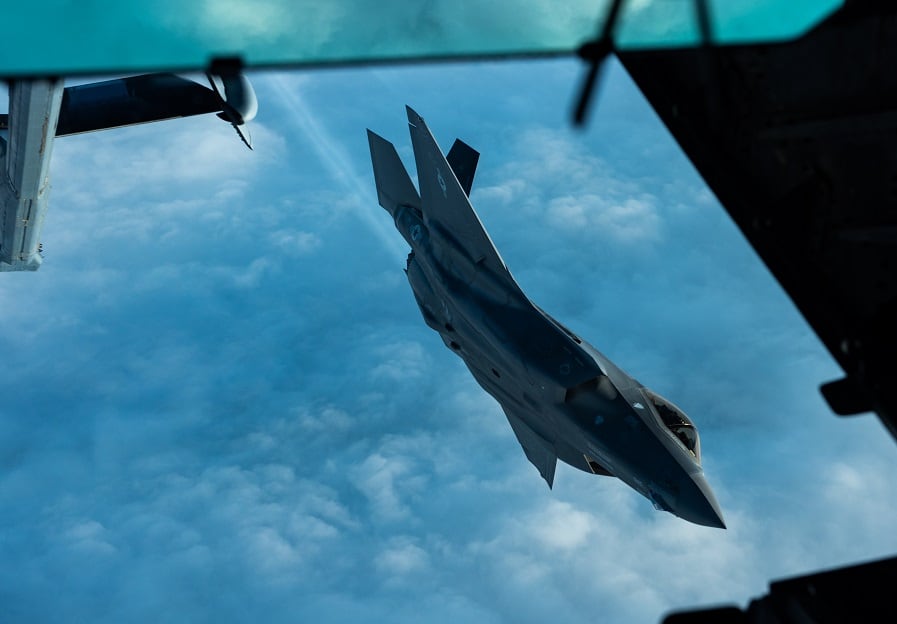NATIONAL HARBOR, Md. — The Air Force wants to grow to 386 operational squadrons, but leaders acknowledge it still lacks a concrete plan to take that from dream to reality.
On Monday, Air Force Secretary Heather Wilson laid out an ambitious goal to boost its number of operational squadrons from 312 to 386 — a move that has implications for procurement and force structure growth.
But Wilson acknowledged there are no plans to begin ramping up the number of squadrons in the next budget cycle, and other service leaders have yet to make a clear case for why such an expansion is necessary or how it would happen.
“The next thing we need to do is to lay out, alright, if we were able to do this, what is the best way to grow the Air Force and then begin to engage the Congress and, more broadly, about how do we move forward to try to develop the Air Force we need? So we’re at the very beginning of this,” Wilson told Defense News in a Sept. 17 interview.
“We don’t have a fully fleshed out program plan to get from here to 2030 with what squadron would be what type,” she added during a During a Sept. 18 roundtable with reporters.
Click here for more from Air Force Association 2018!
“This is a beginning of a dialogue that we now intend to have,” said Chief of Staff Gen. Dave Goldfein. “A lot of the details are now going to be really fleshed out as part of the inclusive dialogue we have with industry, with the Hill, with thinktanks, and with you.”
RELATED

Over the course of the Air Force Association’s annual conference this week, some of the heads of the Air Force’s major commands have weighed in on the proposal — but instead of stridently advocating for the type of growth promoted by the secretary, their remarks have been more measured.
Under the proposal, aerial refueling squadrons logged one of the largest increases, with a growth from 40 to 54 squadrons. As squadrons are usually comprised of at least 12 planes, a 14-squadron hike would add at least 168 tankers — a number comparable to the total KC-46 program of record, which totals 178 planes.
However, when asked how the new plan could affect the KC-46 program, as well as planned follow-on efforts known as KC-Y and KC-Z, Air Mobility Command head Gen. Maryanne Miller acknowledged that the organization will need to wrap up further studies to figure that out.
“None of that is built into the program because we're still going through data showing the analysis of alternatives,” she said Tuesday. However, once the command’s Mobility Capabilities Requirements Study is wrapped up over the next month, it may have a better idea of what form its future tanker inventory could take.
“We anticipate [that] will have an emphasis on the tanker fleet. What’s the right number? Do we have the force mix right between the active, the Guard and the Reserve?” she said.
Gen. Timothy Ray, the new boss of Air Force Global Strike Command, was similarly cautious when describing how the new proposal would effect his command, which oversees the nuclear missile and bomber fleets.
The Air Force plan would add five bomber squadrons to the existing nine — the biggest increase to squadron count by percentage. That could take the B-21’s program of record from 100 to at least 160 — a number much closer to what advocates for the Air Force believes it will need.
But Ray on Monday said the service’s bomber roadmap currently remains unchanged.
“There is still a dialogue with Congress that needs to happen. There are five other studies, I believe, that need to come together to have that discussion,” he said.
“There are a lot of moving parts here. There will be a dialogue, of course, after AFA as we go into the next calendar year and with Congress about how will this play out. But I think this was the secretary giving her best military advice.”
Will Roper, the Air Force’s acquisition executive, noted that once the Air Force has a better idea of the kind of financial support it can expect from Congress, it can begin to assess how to change its acquisition plans — including which programs will be grown.
“We’re not dewy-eyed on this. We know we’ve got to have a lot of support from the American people, from the department and from Congress to afford this,” he said.
“When we know the level of support, balancing between the Air Force we have and the Air Force we need, then it will be our job to try to present the best acquisition approach. That will mean us going through production lines and looking, can we go up or down? How do we change, within the current contracts that we have, efficiently? Are there new contracts [we will need]?”
Valerie Insinna is Defense News' air warfare reporter. She previously worked the Navy/congressional beats for Defense Daily, which followed almost three years as a staff writer for National Defense Magazine. Prior to that, she worked as an editorial assistant for the Tokyo Shimbun’s Washington bureau.



